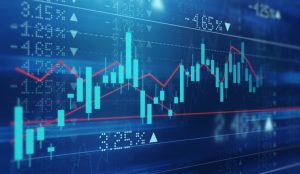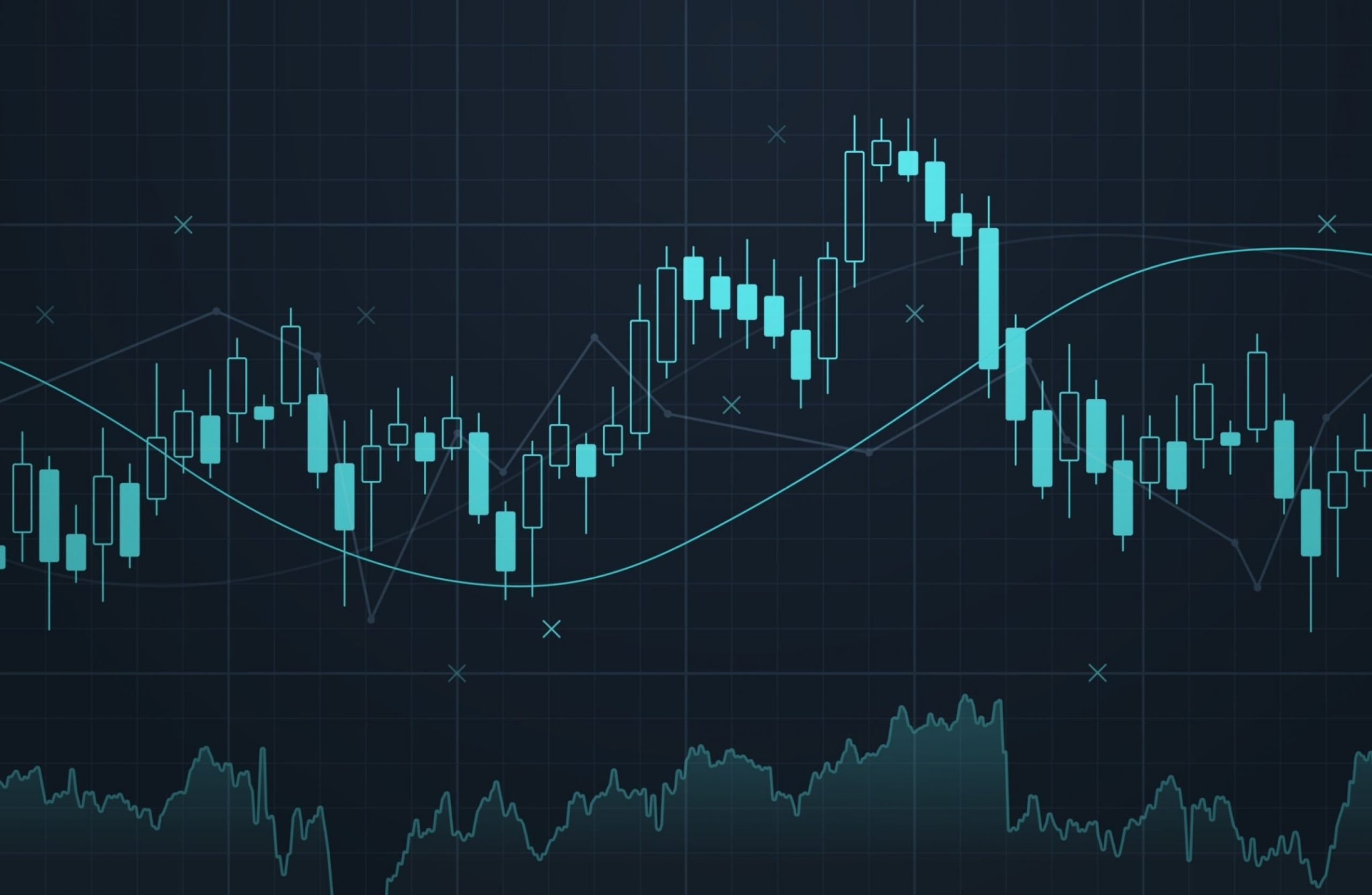In this article, we’ll talk about what is day trading and look at some of the ways traders do it
Understanding Day Trading: Simplified Explanation

In the exciting world of finance, the strategy called day trading has become quite popular. This method involves buying and selling financial stuff, like stocks or money, all in one day. But what is day trading, and how does it really work?
At its core, day trading means buying and selling financial things on the same day. It’s not like regular investing where you wait a long time to make money. Day traders want to make money quickly by watching how prices change in a single day. You might hear people ask, “What is day trading?” a lot, showing how much they want to understand this type of trading.
Day traders often use something called “technical analysis.” This means they look at price charts, patterns, and signs to guess what prices might do next. They don’t care too much about how valuable something really is; they just want to make smart moves and earn money fast.
People talk about what is day trading a bunch because they want to know all about this style of trading. One thing day traders do is called scalping. This is when they do really fast trades to get even tiny price changes.
They might only hold onto something for a very short time, like a few minutes. By doing this a lot, they can make a bit of money each time and it can add up. To do scalping, you need to be really quick and have a good way to make trades fast.
Another way traders work is with something called momentum trading. This is when they try to ride big price waves. If a price is going up a lot, they’ll jump in and hope the price keeps going up. But this way can be risky, because prices can suddenly go down too.
Day trading is exciting, but it’s also risky. People can make lots of money, but they can also lose a lot. Sometimes, if traders get too excited or scared, they might make bad choices. This is why having a good plan and staying calm is very important.
To do day trading well, you need good tools and things to help you. Having information about prices in real-time is super important. You also need a good way to buy and sell things quickly. Traders also use special tools, like lines on charts and little signs, to help them know when to buy or sell.
Making a good plan is a big part of trading. This plan helps traders know what to do and when. It also helps them not make silly choices that could cost them money. Traders need to be ready to change their plans because prices can change fast in just one day.
In the end, day trading means buying and selling financial things in one day to try and make money. People do this by looking at price patterns and making quick moves. They might do scalping, which is fast trading, or momentum trading, which is riding price waves.
Day trading can be risky, so having a good plan and staying calm is important. As people keep exploring day trading, it’s important to know the basics. Day trading can bring money, but it can also bring loss. If you want to be good at it, you need to learn and practice. Figuring out “what is day trading” is just the beginning of becoming a smart trader in the exciting world of finance.
What Is Day Trading: Balancing Risk and Rewards in Day Trading

In the exciting world of day trading, things can move super quickly. This type of trading involves buying and selling things like stocks within just one day. But what is day trading exactly? we’ll talk about the risks and rewards that come with this fast-paced style of trading.
Day traders want to make money fast by doing lots of trades in a single day. They’re not looking to hold onto things for a long time like regular investors. Instead, they want to grab small price changes and make money from them.
But hold on! With the chance to make money quickly, there’s also a big chance of losing money quickly. Day trading is like a roller coaster – prices can go up and down a lot in a short time. This is why the keyword “what is day trading” keeps popping up. People want to understand how to handle this exciting but risky style of trading.
In day trading, risk and rewards are like two sides of a coin. On one side, there’s the chance to make a lot of money. Day traders dream of big profits by jumping on price changes. But, on the flip side, there’s a lot of risk too. Prices can move so fast that traders can end up losing a lot of money just as quickly.
Now, let’s talk about leverage. Leverage is like a superpower that traders use. With a little bit of money, they can control a much bigger trade. It’s like borrowing money from the trading platform. While this can make profits bigger, it can also make losses bigger. So, traders need to be careful when using leverage.
Day traders need to be realistic. They can’t always expect big profits. Some people do make a lot of money, but those stories are like rare gems. Most traders make smaller profits and sometimes even losses. It’s important to remember this and not get carried away by the dream of striking it rich.
Managing risk is a secret weapon for day traders. They follow a rule – never risk too much on one trade. This means they only use a small part of their money on each trade. This way, even if a trade goes wrong, they won’t lose too much. Risk management is like wearing a safety helmet on the trading roller coaster.
But there’s more to trading than just numbers. Emotions play a big role too. Fear and greed are two big emotions that can mess up a trader’s decisions. Fear can make a trader sell too quickly when they should wait, and greed can make them take too much risk. So, emotional discipline is super important.
Here’s a cool rule for day traders: “Cut your losses and let your winners ride.” This means if a trade is going bad, get out quickly to limit the loss. But if it’s going well, let it go on for more profit. This rule helps traders keep their cool and not let a single bad trade ruin everything.
Day trading isn’t a game for everyone. It needs special skills like understanding charts, analyzing trends, and quick decision-making. Traders also need to know their trading platform really well. Technical problems can be a big headache in day trading, so being familiar with the platform is like having a smooth ride on the roller coaster.
To wrap it up, day trading is like a seesaw of risk and rewards. People are curious about “what is day trading” because it’s exciting. But the thrill comes with risks. Traders want to make quick money, but they also have to be ready for quick losses.
By managing risk, keeping emotions in check, and following some smart rules, day traders can increase their chances of success. The journey into day trading is full of ups and downs, and understanding this balance is key to enjoying the ride while staying safe.
Mastering Day Trading: Simple Tools and Techniques for Success

Stepping into the world of day trading, understanding the right tools and techniques can play a big role in your journey to success. As we’ve previously explored, day trading involves quickly buying and selling financial stuff all in one trading day. In this article, we’re going to look into the important tools and techniques that day traders use to handle the fast and ever-changing nature of this style of trading.
Day traders use technical analysis to study charts and patterns, which helps them guess what prices will do next. By looking at past price data and finding trends, day traders try to find chances to make good trades.
Important tools in day trading are these things called “indicators.” These indicators tell traders about price trends and where they could buy or sell. Some common indicators are moving averages, which show the overall trend, and the relative strength index (RSI), which helps traders figure out if something is being bought too much or sold too much.
Patterns on charts are also really important in day trading. Patterns like triangles, flags, and head-and-shoulders shapes give clues about what prices might do next. When traders see these patterns, they can make better decisions about when to buy or sell.
Getting information in real time is like gold for day traders. Knowing what’s happening right now with prices, trading volume, and how people are feeling about the market is super important.
Online trading platforms give access to this info, and that’s why it’s crucial for day traders to understand these tools well. The trading platforms themselves are like powerful tools in a day trader’s toolbox. They have things like real-time charts, ways to make trades, and tools for analysis. Picking the right trading platform is like choosing the right tool for the job.
You might have heard about something called “algo” trading. This is when computers do the trading based on set rules. It can be really helpful because it takes out emotions from trading. But to use algo trading, you need to know about programming and how to create good trading strategies.
Keeping your money safe is really important in day trading. Traders use tools to manage risk. One common thing they do is set “stop-loss” orders. These orders sell a trade automatically if the price goes to a certain level. This way, if the trade goes wrong, the loss isn’t too big.
For new day traders, practicing with a “paper” account is a smart move. This is like a pretend account where you can try out your strategies without using real money. It’s a way to practice, get better, and gain confidence before trading with real money. You’ll notice the repeated appearance of the keyword “what is day trading” – it shows how important these techniques are.
Day trading can be a roller coaster of emotions, so having a solid trading plan is like a safety net. A trading plan is like a map. It has your strategies, how much risk you’re okay with, and what you want to achieve. Having a plan keeps you focused and helps you make good choices, even when things get intense.
To sum it up, day trading is a thrilling style of trading that needs specific tools and techniques. Using technical analysis, understanding indicators and patterns, and getting real-time info are key. Trading platforms are like trusty companions for day traders.
Algo trading and risk management tools are extra tools in the box. Practicing with paper trading and sticking to a trading plan are also important techniques. By understanding and using them well, day traders can be better prepared to navigate the exciting but challenging world of day trading.
Conclusion
Day trading, a strategy involving rapid buying and selling within a single day, raises the question: “what is day trading?” Traders seek quick profits, navigating risk and rewards. The balance between potential gains and losses is crucial.
Technical analysis, indicators, and chart patterns aid decision-making. Real-time data and reliable platforms facilitate execution. Emotion control and risk management are vital, with stop-loss orders protecting investments. Simulated trading hones skills. A solid trading plan guides actions.
The world of day trading requires expertise and adaptability. The question “what is day trading” highlights the quest for understanding tools and techniques that underpin this fast-paced trading style.
Hope you’ve learnt alot from this article!! We’re glad you did. Follow Dipprofit on all social media platforms to learn more about other exciting topics


